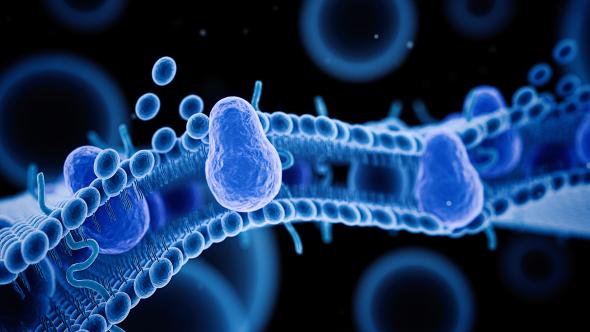The Namur research team has used LUMI's supercomputing power to push back the limits of our current knowledge. They were able to study in detail the evolution of a realistic plasma membrane with a composition similar to that of a healthy cell. Including no less than 42 different lipid types covering a wide variety of lipids, and cholesterol molecules, for a total of over 3 million atoms, this work truly represents a computational feat. More specifically, they investigated the influence of lipid composition on the non-linear optical (NLO) response of probe molecules, chromophores, inserted into membranes of increasing complexity. Nonlinear optics is a highly sensitive analysis technique, and the aim of this study was to verify that the chromophores' environment, and therefore the membrane composition, induced sufficiently large changes in this ONL response to be detected.
To do this, numerical simulations were used. They combine molecular dynamics (to know the temporal evolution of the system) and quantum chemistry calculations (to predict the ONL response). Then, by combining the results obtained with machine learning tools, it was possible to highlight the factors influencing the ONL response in this complex environment, paving the way for the study of other cell membranes, this time typical of diseased cells.
Image caption: Simulation of an ideal plasma membrane including no less than 42 different lipid types and covering a wide variety of lipids (phosphatidic acid [PA], phosphatitylcholine [PC], phosphatitylethanolamine [PE], phosphatitylinositol [PI], phosphatitylserine [PS], sphingomyelin [SM], and diaglycerol [DAG]), cholesterol molecules [CHL], as well as probe molecules [di-8-ANEPPS] with a non-linear optical response [ONL], for a total of over 3 million atoms.
All in all, this work represents a first step towards understanding the cooperation, synergy and interactions that occur in lipid membranes and opens up new avenues for drug design in the field of membrane lipid therapy.
Access the publication Journal of Chemical Information and Modeling: "Multimillion Atom Simulations of Di-8-ANEPPS Chromophores Embedded in a Model Plasma Membrane: Toward the Investigation of Realistic Dyed Cell Membranes"

